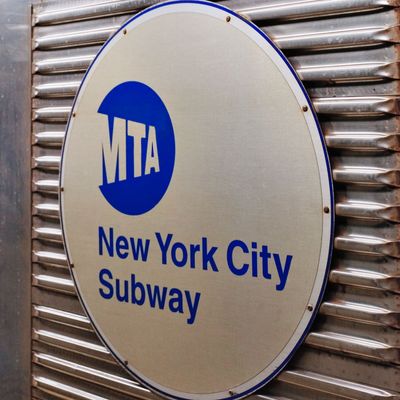
For many New Yorkers, the subway is like the ninth circle of hell. On a bad day, it’s a glorified rat tunnel. On a good day, it gets you to work on time. Erstwhile LCD Soundsystem front man James Murphy is out to prove otherwise with his Subway Symphony project, which aims to upend the way cranky New Yorkers experience their commute by transforming turnstiles into music machines that play a single sonorous tone — one of several chosen in a probability system — every time they rotate.
“It’s the rare idea of mine that’s actually not born out of complaint,” he tells me. There’s not a hint of irony in his face as we sit in front of a few Subway Symphony turnstile prototypes at Milk Studios in Chelsea. “I love the subway. I loved it when it was cleaned up. I loved it when there was graffiti in the cars. I love the history.”
The MTA is in bad shape. It’s operating under a $15 million budget deficit. Rider satisfaction is down. But where New Yorkers see germs, overcrowding, and a bureaucratic nightmare so elaborate it would make Kafka weep, Murphy sees potential. One year, in the Barcelona Airport, he heard a three-note sequence used as an announcement note. “They were the same notes of the beginning of a song I used to hear as a kid, and that got me really nostalgic.” Now he wants to re-create that sensation for every New Yorker. “I traveled to Japan at one point, and I went on the Metro, and they have all of these pretty sounds. It’s really nice. It was the first time I’d ever thought about it: What if the New York subway had nice sounds? What if those nice sounds were different at every station, and you grew up around one station and got to know that music like your body knew it? Like, you understood what the tone of your childhood home’s music was, and where your school was, and where your job was.”
Right now, Murphy says, the New York subway is brutal-sounding. “They’ve been working on it, to get the brake noise to be less loud, get the inside of the cars to be less loud. There’s people who have done amazing research on its effects. When trains go by schools, that sound of a subway rolling by and screeching affects kids’ learning.” Like Murphy’s data-driven tennis remixes, Subway Symphony involves algorithms and generating probabilities. I got to play around with the prototypes at Milk. The tones reminded me of Brian Eno’s Music for Airports, an album Murphy says he plays for his baby son when he’s cranky. (“He loves it. It calms him down.”) It’s quite beautiful, and if they ever make it underground, it would sort of be like playing a lyre in a dungeon. Hey, we’ll take any improvements we can get.
Subway Symphony isn’t just an oddball art experiment. Murphy plans to propose his idea, which was actually born a few years ago, to the MTA, and the project is currently backed by Heineken. Given the fact that we still don’t have a Second Avenue line, though, all of this sort of seems like a well-intentioned pipe dream.
“It’s hard to sit down with [the MTA], and for good reason,” says Murphy. “They have real-life stuff to do. They should sit down with me when we’ve done enough of our homework. I feel like we’re doing our homework right now. We’ve built trial turnstiles. We’re trying to get them to agree to allow us to do a test station. That’s the conversation at the moment. My hopes are they have constructive criticism for our project in terms of how we make the MTA better for more New Yorkers. We’ve hired an engineering company to figure out what their available technology on the turnstiles is and how can we adapt that, rather than doing anything crazy and expensive. They’re going to switch to Tap-and-Ride in a few years. So if it’s going to happen, that’s our only chance. It has to happen then.”
Does Murphy want the Bedford L Station, close to his new Williamsburg wine bar, the Four Horseman, to be Subway Symphony’s first test station? “I don’t know,” he says, “I mean, my ideal station is the station they let us do it in. One that isn’t unused. A station we could do it in where people actually go. That’s anything. I’m wide open. I would just love to try it and let people hear it. I can describe it all I want, but people need to experience it because I’ll learn from that, and then make it better.”




